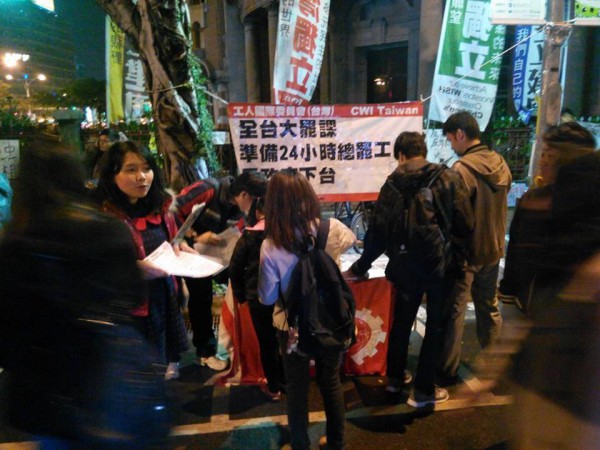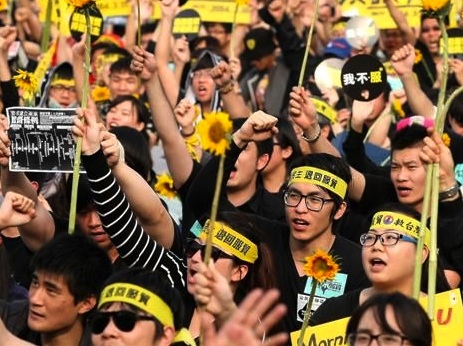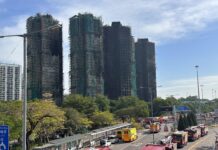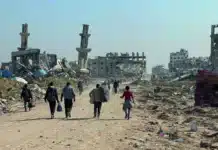What are the lessons of the island’s ‘sunflower movement’?
Taiwan has witnessed an unprecedented mass protest movement since 18 March when around 200 students occupied the main chamber of the Legislative Yuan (parliament) to stop the ratification of the contentious Cross-Strait Service Trade Agreement (CSSTA) between Taiwan and China. The beginning of an ‘Asian Spring’ is how some media commentators have described this movement. The abrupt way the protests have ended raises many questions about what the movement has achieved and which social forces can mount a serious challenge to neo-liberal economic policies and trade deals. We interviewed Sally Tang Mei-ching, who has been coordinating CWI Taiwan’s participation in the Taipei protests.
The leaders of Taiwan’s so-called ‘sunflower movement’ announced the end of their occupation of parliament; what does this signify?
Yes, the student leaders inside the occupation said they will leave the Legislative Yuan on Thursday 10 April. This is after a pledge by the parliamentary speaker, Wang Jin-pyng, a member of the ruling Kuomintang (KMT), that a new law would be enacted for monitoring trade deals with China. The CWI in Taiwan is very critical of the decision to call off the occupation and the way it was reached, which wasn’t democratic. The anti-government protests since 18 March represent a historic movement, which mobilised half a million Taiwanese on the streets and threatened to develop into strikes against president Ma Ying-jeou and the trade pact – this was being discussed and to some extent took place in the universities. But much more could have been achieved without this hasty announcement to wind down the protests. The occupation was seen as the hub of the protests, so inevitably, while protests will continue because the government has not retreated, it will be harder to regain the lost momentum. There is a lot of confusion now about what to do next.
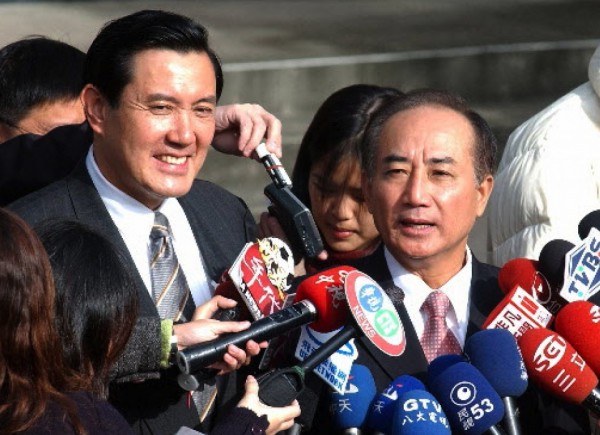
Does this represent a victory over the government?
No, it can’t be judged a victory. The concessions made are small and quite vague. The past three weeks have seen an incredible mass movement, with around 500,000 people marching on 30 March, the biggest demonstration in Taiwan’s history. Students at 80 universities expressed support for a nationwide student strike and many walked out although it wasn’t coordinated or a really collectively organised strike, more like individual boycotts. Still, it is a big step forward in terms of mass consciousness; the fact that strikes are now on the table as a tactic. Most important of all was that workers’ unions began to discuss going on strike, despite many problems because many unions are tied to the ruling KMT and support the trade pact with China. The union at Cosmos Bank voted last week to go out on strike, but whether this will happen now is unclear with the occupation called off.
So a much bigger opportunity has unfortunately been wasted. The mass movement could have achieved a real victory by forcing the government to abandon the trade pact, and even forcing the resignation of top members of the government including [President] Ma himself, who is the least popular of Taiwan’s elected presidents with opinion polls showing just 9 percent support! Judged against what was possible, the student leaders’ decision unfortunately lets the government off the hook. What needs to be done now is to rebuild the momentum, organise, and draw the lessons.
Could you explain the details under which the occupation has ended?
It is based on taking the word of one leader of the ruling party, Wang, who is involved in a power struggle with Ma and the president’s faction. Maybe Ma also privately agreed this deal to put a stop to the occupation, but he has not personally promised anything and gets to save face, and his pet project, the trade pact, survives. We are very critical of the student leaders for announcing an end to the occupation on these terms, when even the limited promise of Wang may be overturned by other sections of the ruling party. In our opinion the student leaders relied too much on the main opposition party, DPP [Democratic Progressive Party], which gave support to the mass protests but unlike most people involved this party does not stand for scrapping the CSSTA pact.
A major argument for ending the occupation is that students have exams now and that the occupation cannot go on forever. Well okay, but then before you leave your positions you should announce a new form of mass action, a new strategy, and debate democratically what can be done to keep up the pressure on the government. We [the CWI] have never said an occupation is the only method, in fact we warned about the limits of occupations. They are now a common method of struggle everywhere in the world, and they are necessary, and can become a rallying point for a mass movement as in Taiwan. But an occupation on its own is never enough. It must be a springboard to something more powerful like a strike. But in this case the leaders have not proposed anything concrete to follow – they talk about “returning the struggle to the people,” and continuing it in “another form,” but what? These are just empty words at this stage.
Many are critical. A coalition of around 16 groups held a press conference this week. Some were originally inside the leadership but have left because they disagree with the undemocratic way the student leaders make decisions especially the important decision to end the movement. It should be discussed with the mass, they said. Unfortunately none of these groups is confident to propose an alternative. Others are dissatisfied but accept the end of the occupation as inevitable. On 10 April, a group of activists who had occupied the second floor of the Legislative Yuan to defend the main occupation also published a statement criticising the decision to call off the action: “We have been helping to block the pathway in the yuan, helping to move resources, but no one ever discussed with us on any decision during the occupation.” They said they will respect the decision to leave, but do not agree with the decision.

So what is the CWI’s alternative?
We argued for a Taiwan-wide school and university strike and for this to spread to workers, for a 24-hour general strike. If the student leaders had not given up their occupation, and instead issued a call for strikes, then ending the occupation in itself does not have a decisive importance. But ending the protest without announcing a ‘next step’ – this is a big problem. It causes a lot of confusion and allows the government to take the initiative. While this is happening there are hard attacks in the media against the protesters and the police are arresting youth who took part in another occupation protest.
In our opinion the government was in a deep crisis, it was balancing on a knife-edge and a push was needed. The occupation needed to upgrade – in our opinion the strike was the key issue. In such a situation if you don’t go forward you go back. This is the lesson.
It would have been a big blow to the prestige of Ma and the ruling party if they had been forced to abandon the trade pact. Such a result was entirely possible because the government and ruling class were really worried by the size of the movement and its political effects. As many groups who are critical of the decision to end the occupation point out, there are really no firm promises. It’s not clear whether [parliamentary speaker] Wang’s offer will really stand and the KMT has a big majority in parliament, so it can still pass the trade pact although there may be some amendments from the opposition party, the DPP. In our opinion these amendments are secondary; they don’t change the nature of the pact, which is neo-liberal and anti-worker.
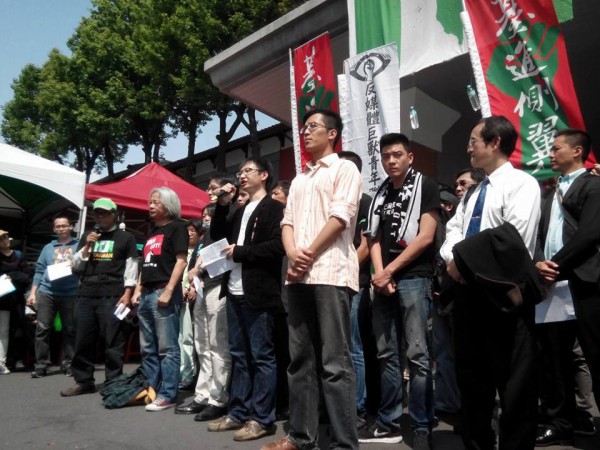
Which groups were involved in the occupation?
The main student organisation involved is Black Island Nation Youth Front. They are influenced by the ‘pan green’ camp nationalists [DPP-led political bloc], they stand for Taiwan independence, which is also more and more popular among youth. On that issue, the CWI supports the right to self-determination for Taiwan. We reject the ‘Great China’ propaganda of the Chinese dictatorship, but we also oppose racism – there is a big wave of anti-mainlander racism. It’s impossible to defeat capitalist trade pacts without united workers’ struggle, so racism is something the capitalists encourage, it helps them.
There were splits and divisions among the students including the Black Island Youth inside the occupied legislature. The leaders of this organisation operated in a very undemocratic way, a top-down bureaucratic way, and that is also the way they ended the protest. During the demonstrations student stewards confiscated leaflets from other, critical, groups. Only selected people were allowed into the occupation – this was defended as keeping out government spies, but there are other ways to do that.
The movement in Taiwan was not so different from many other occupy movements we’ve seen around the world. Even if they say they are anti-leaders and against political parties, the small groups at the top of these spontaneous struggles can become very quickly bureaucratised, especially if they are based on the middle classes. In Taiwan there is no working class party with a tradition of democratic structures and debates. Something similar happened in the mass occupation in Hong Kong two years ago, against the government’s nationalistic education plan. A spontaneous student group emerged largely through social media, and it became the spokespersons for the mass protests partly by accident and partly because of the media. There was a lack of real democracy and the leaders wanted to prevent the struggle becoming too radical or making explicit political demands for the government to fall.
In Taiwan, the Black Island Youth has become a mass force on facebook with over 300,000 fans, but in reality it’s still a small organisation and its leaders decide everything without a vote or real discussion. This is not just our view, but also the view of ex-members who left the occupation leadership after disagreements in recent weeks.
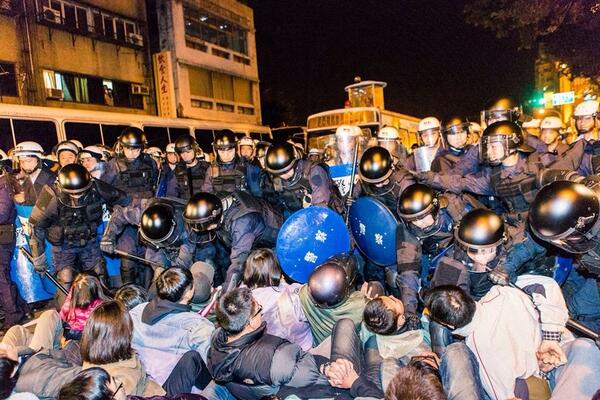
Wasn’t there a risk that force would be used to break the occupation?
Yes, and this was also the case on 23-24 March when riot police brutally attacked as thousands of youth and students tried to occupy the Executive Yuan, another government building. The occupation leaders inside the Legislative Yuan did not really support the new occupation. The attempt to occupy the Executive Yuan arose out of frustration among many youth feeling the original occupation was too top-down and too inclined towards a compromise.
After the police crackdown the student leaders should have put even more focus on condemning the repression and used this to warn, to educate, about how far the government is prepared to go. The media tried to twist it so it seemed the youth were the violent ones, the lawbreakers. After that crackdown the government used ‘proxies’ instead – criminal gangs linked to the KMT who organised counter demonstrations. The CWI argued this showed the need to get workers more directly into the struggle, by appealing to unions to come and help organise stewarding and self-defence. We pointed to Turkey, where the public sector unions went on strike in protest at the police crackdown against last year’s occupation.
What will happen now and what longer-term effects will the ‘sunflower movement’ have?
Now the task is to organise and draw lessons. The government must be very relieved that the occupation is over, and for the masses it was a missed opportunity, but it doesn’t mean things go back to how they were on 17 March. As Lenin said, “an ounce of experience is worth a ton of theory,” and the past three weeks have been an incredible experience. And new protests are happening already, so the effects are a very big problem for the government.
This struggle has given many people confidence to challenge the system. And perhaps most importantly this movement has put the issue of a nationwide strike into the discussion. It did not take place, but it is now part of the discussion within society, and this puts the discussion on a higher level than before. It proves what we have said all along that students can play a good role in starting struggles, but they can’t finish them, especially if they remain a student-only movement, which was the plan of the occupation leaders. This makes it easier for socialists to explain that the working class is the most important force in the struggle and why we need to build a workers’ party against the two capitalist, nationalist [pro-China versus anti-China] blocs.
